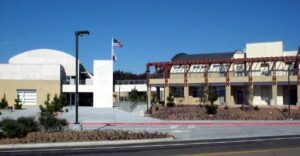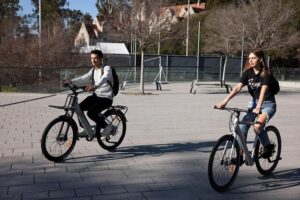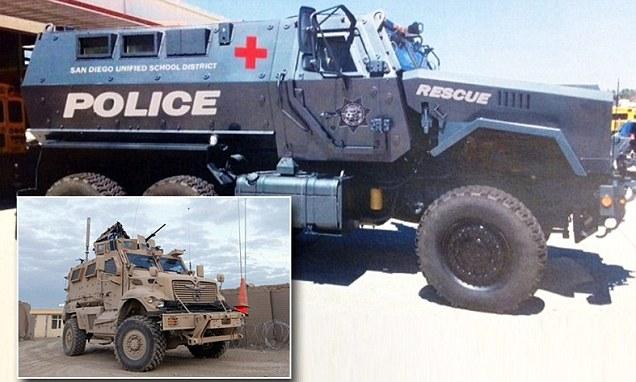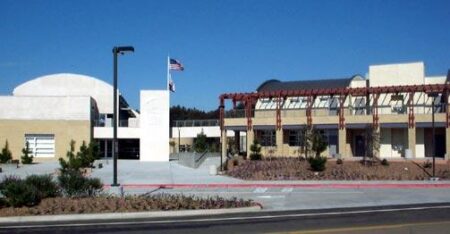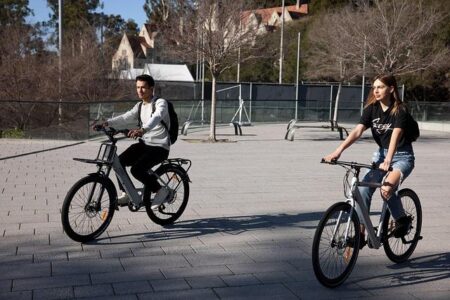San Diego School DistrictŌĆÖs Controversial Purchase of an 18-Ton Armored Vehicle Sparks Community Debate
The San Diego School DistrictŌĆÖs recent procurement of a massive 18-ton armored vehicle, formerly utilized by military and law enforcement agencies, has ignited a heated discussion among parents, educators, and local residents. While the district asserts that this acquisition aims to bolster campus security during critical emergencies, many community members question the appropriateness of deploying such militarized equipment in schools. This controversy unfolds amid a broader national dialogue on how best to safeguard students while maintaining a nurturing and inclusive educational environment.
Community Outcry Over Militarized Equipment in Schools
Parents and local advocates have expressed strong reservations about the armored vehicleŌĆÖs presence on school grounds, fearing it may contribute to an intimidating, prison-like atmosphere rather than a safe haven for learning. Critics argue that the districtŌĆÖs focus on heavy-duty security hardware diverts essential resources from preventative initiatives such as mental health support and counseling services, which many experts believe are more effective in reducing school violence.
In response, district officials emphasize the vehicleŌĆÖs critical role in emergency scenarios, particularly active shooter incidents, highlighting its capacity to protect students and staff during rare but severe threats. Below is a summary contrasting the primary concerns voiced by the community with the districtŌĆÖs rationale:
| Community Concerns | DistrictŌĆÖs Defense |
|---|---|
| Creates a hostile, prison-like environment | Provides unmatched protection in extreme emergencies |
| Redirects funds from educational and mental health programs | Prepares schools for rare but high-risk situations |
| May heighten anxiety among students and staff | Enables swift, secure law enforcement intervention |
Calls for Clarity: Parents and Leaders Demand Transparency on Vehicle Use and Safety Procedures
Community stakeholders are urging the district to provide clear information regarding the armored vehicleŌĆÖs operational protocols, including who will be authorized to operate it and under what circumstances it will be deployed. The vehicleŌĆÖs imposing presence has raised concerns about the increasing militarization of school environments, prompting demands for open dialogue to ensure that security measures do not undermine the schoolŌĆÖs welcoming atmosphere.
Key questions raised by parents and community leaders include:
- Operator Training: What qualifications and certifications are required to handle the vehicle safely?
- Emergency Procedures: How will the vehicle be integrated into crisis response plans, and what safeguards protect students during its use?
- Frequency of Use: Will the vehicle be reserved solely for emergencies, or might it be used for routine transport or public demonstrations?
- Community Engagement: How is the district incorporating feedback from families and civic groups before finalizing deployment policies?
| Area of Concern | Transparency Expectations |
|---|---|
| Training & Operation | Details on certification, operator expertise, and training schedules |
| Safety Protocols | Emergency use guidelines, risk assessments, and safety drills involving the vehicle |
| Usage Policy | Clarification on daily operations, special events, and crisis deployment |
| Community Involvement | Public forums, Q&A sessions, and integration of community feedback |
Expert Perspectives: The Pros and Cons of Militarized School Security
Opinions among specialists in security, psychology, and education remain sharply divided regarding the introduction of military-grade equipment in schools. Supporters, including law enforcement professionals, argue that the armored vehicle significantly enhances the districtŌĆÖs ability to respond rapidly and effectively to violent threats, potentially deterring attackers and safeguarding lives. They highlight benefits such as:
- Swift mobilization during emergencies
- Strengthened physical security barriers
- Seamless integration with existing emergency response frameworks
On the other hand, child psychologists and educational experts caution against the psychological ramifications of such militarization. They warn that the presence of armored vehicles may instill fear, increase anxiety, and disrupt the positive school culture essential for learning and development. Their concerns include:
- Potential trauma triggered by aggressive security imagery
- Negative impact on student well-being and school climate
- Questionable return on investment compared to alternative safety strategies
| Expert Group | Arguments in Favor | Concerns Raised |
|---|---|---|
| Law Enforcement | Improved crisis response and deterrence | High visibility may escalate tension |
| Psychologists | Focus on mental health and trauma prevention | Fear, anxiety, and negative school atmosphere |
| Educators | Enhanced perception of safety | Cost-benefit concerns and potential distractions |
Strategies for Harmonizing Security Enhancements with a Supportive School Climate
Ensuring student safety while fostering a positive and supportive learning environment requires a comprehensive approach that extends beyond the acquisition of armored vehicles. Schools should prioritize transparent communication with families and staff, alongside robust mental health services and conflict resolution initiatives. These human-centered strategies are vital for preventing incidents and building trust within the school community.
Effective measures to balance security and well-being include:
- Adopting restorative justice frameworks to address behavioral challenges constructively
- Expanding access to counseling and social-emotional learning programs
- Hosting regular community meetings to discuss safety policies and gather input
- Training staff in de-escalation and trauma-informed practices
- Maintaining transparency about security protocols while respecting student dignity and rights
| Approach | Benefit | Example |
|---|---|---|
| Mental Health Initiatives | Reduces anxiety and conflict | On-site counseling services |
| Community Engagement | Builds trust and cooperation | Parent and staff forums |
| Staff Training | Enhances conflict management | De-escalation workshops |
| Restorative Justice | Promotes accountability and healing | Mediation circles |
Conclusion: Navigating the Complexities of School Security in San Diego
The ongoing debate surrounding the San Diego School DistrictŌĆÖs armored vehicle purchase highlights the complex challenges of ensuring safety in educational settings. While advocates emphasize the vehicleŌĆÖs potential to protect against rare but severe threats, detractors worry about its psychological impact and the message it sends about school priorities. This situation reflects a broader national conversation about how to effectively safeguard students without compromising the welcoming and supportive nature of schools. As this story develops, continued community engagement and transparent policymaking will be essential to finding a balanced path forward.

